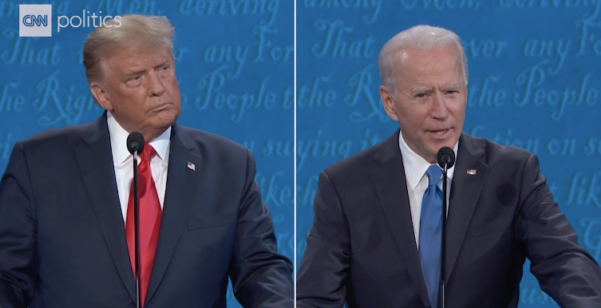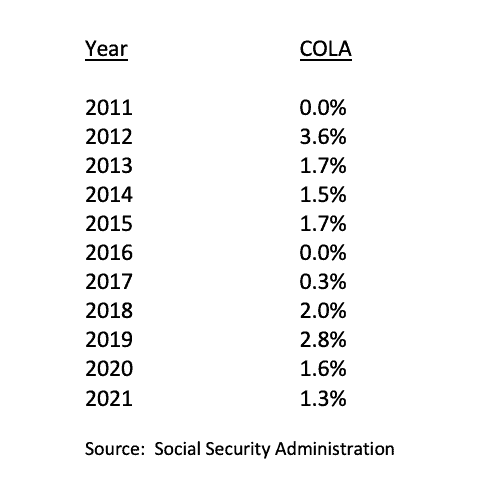A Democratic Senate is Key to Seniors’ Financial & Health Security

Whether Donald Trump or Joe Biden wins the presidency, American seniors will be better off if Democrats take control of the Senate. Since 2019, the Democratic-controlled House has served as a firewall against Trump’s efforts to defund, cut, and privatize Social Security and Medicare. But as long as Republicans control the Senate, legislation to protect and expand seniors’ earned benefits will remain in limbo. Under a Democratic majority, though, seniors would likely see real progress where their financial and health security are concerned.
Senate majority leader Mitch McConnell (who aptly calls himself the “Grim Reaper”), has buried legislation that would have benefitted seniors — not to mention his refusal to take up last May’s House-passed COVID relief bill as the virus continues to ravage older Americans. The most glaring example is the Lower Drug Costs Now Act (H.R. 3), which the House passed last December.
H.R. 3 would allow Medicare to negotiate prescription prices with Big Pharma, which would save the government and seniors nearly $350 billion in drug costs. The bill would also add dental, vision, and hearing benefits to traditional Medicare. It represents the biggest step forward in lowering seniors’ health care costs in a generation, but Mitch McConnell won’t bring it up for a vote.
Leader McConnell will not even allow a vote on the bipartisan Prescription Drug Pricing Reduction Act (introduced by Senators Grassley and Wyden). Grassley-Wyden doesn’t include Medicare drug price negotiation, but it would spare seniors some financial pain at the pharmacy counter and is far better than doing nothing.
If the Supreme Court strikes down the Affordable Care Act, which strengthened Medicare’s finances and included enhanced benefits for seniors (not to mention protecting older patients with pre-existing conditions), a Democratic House and Senate could replace or revise it. Needless to say, if Joe Biden wins, his progressive health care proposals would have a far better chance in a Senate under Democratic control.
Seniors would not only be physically healthier in this scenario, but financially better off, too. The House has been considering landmark legislation to strengthen and boost Social Security benefits. The Social Security 2100 Act, introduced by Rep. John Larson (D-CT), would keep the program financially healthy through the end of the century, while boosting benefits for all retirees. Joe Biden has already embraced many of the proposals in this bill and has his own plan to expand Social Security. The Democrats could effectively counter conservative proposals to cut (and privatize) the program.
A Democratic-controlled Senate could mitigate COVID’s deleterious effects on current and future retirees’ Social Security benefits. Under new leadership, the Senate could increase the paltry 1.3% cost-of-living adjustment (COLA) to 3% for 2021, which would be welcome news for older Americans who lost their jobs during the pandemic and are forced to retire early — and for seniors already struggling to pay their bills. The Senate could also prevent workers born in 1960 (and possibly 1961, as well) from suffering a lifetime reduction in their future benefits caused by a COVID-related drop in average wages.
Mitch McConnell will continue to block progress for America’s seniors. A Democratic Senate would bulldoze McConnell’s wall of obstruction. Even President Trump, no friend to American seniors through his tampering with (and proposed cuts to) Social Security and Medicare, would likely feel pressure to work with a Democratic-controlled Senate if he wins re-election. It’s the only way (besides failed executive orders) that he could claim legislative success in a second term.
The Democrats only need to flip at least 3 seats in order to regain control of the Senate. Based on current polling, the odds are in their favor. The National Committee has endorsed several Democratic Senate candidates looking to unseat incumbent Republicans. (View our list of endorsed candidates for the 2020 cycle here.)
This isn’t about partisanship. It’s about choosing elected representatives who believe seniors deserve a genuine commitment to protecting their much-needed retirement and health benefits. It’s about electing those who will stand for protecting patients with pre-existing conditions like diabetes, heart disease, and cancer. It’s about sending public servants to Capitol Hill who can enact a comprehensive federal response to the pandemic that current leadership has failed to produce. To ensure a safe and prosperous future, seniors and their families must vote wisely — and make sure their votes count.
Social Security, Medicare Make Unexpected Appearance in Last Night’s Debate



Social Security and Medicare were not on moderator Kirsten Welker’s topic list during last night’s presidential debate, but some issues are too important to ignore. The candidates themselves broached the issue of Americans’ earned benefits about 24 minutes into the debate, with President Trump accusing Joe Biden of “talking about destroying your Medicare and destroying your Social Security.”
It’s a patently ridiculous assertion, grounded not in fact but in the president’s warped perceptions of reality. The timing of his remark is especially notable since the President himself took a step that could lead to the dismantling of Social Security. On August 8th, he issued an order suspending the payroll tax contributions that workers make toward their Social Security retirement benefits. At the same time, he pledged to “terminate” Social Security payroll taxes if re-elected, which would effectively defund the entire program – and seniors’ benefits along with it.
Joe Biden punched back against Trump’s allegation quickly, reminding voters who truly is threatening older American’s financial and health security.
“This is the guy who’s tried to cut Medicare. The idea that Donald Trump is lecturing me on Social Security and Medicare? The actuary of Social Security said… if [Trump] continues his plan to (terminate) the tax on Social Security, Social Security will be bankrupt by 2023 with no way to make up for it.” – Joe Biden, presidential debate, 10/22/20,
Of course, that is exactly what the Social Security actuary estimated last month in a letter to members of Congress concerned about the impact of eliminating payroll taxes, if they weren’t replaced by general revenue.
The President and his advisors have had a pattern of attempting to undermine Social Security these past three and a half years. But his reckless payroll tax policy was the ‘last straw’ for the National Committee to Preserve Social Security and Medicare. In September, we broke with 38 years of precedent and endorsed Joe Biden for president. Before that, we had stayed out of presidential races, focusing on Congressional elections instead. But at that point we felt we had no choice.
“Never in our organization’s history have we seen such a consistent level of threats to the health and retirement security of America’s seniors. There is no doubt that the most effective way to protect the future for older Americans is to elect Joe Biden as president.” – National Committee president Max Richtman, 9/17/20
As for Medicare, Joe Biden correctly said that President Trump has repeatedly tried to cut Medicare. Each of the annual Trump budget proposals have called for slashing Medicare by billions of dollars. The Trump administration has also undermined traditional Medicare by unfairly promoting for-profit Medicare Advantage plans in its outreach and enrollment materials. Biden also reminded voters that, as President, he will sign legislation finally allowing Medicare to negotiate prescription drug prices with Big Pharma, which would significantly reduce drug costs and save the program $345 billion over 10 years.
“We’re going to make sure we reduce the premiums and reduce drug prices by making sure that there’s competition, that doesn’t exist now, by allowing Medicare to negotiate drug prices with the insurance companies.” – Joe Biden, presidential debate, 10/22/20
These discussions of Social Security and Medicare – though all too rare in the 2020 primary and general election debates – could not have made the differences between the two candidates clearer. If given a second term, President Trump will cut and undermine Medicare — and defund Social Security, leaving the 69 million Americans who depend on their earned retirement and disability benefits out in the cold. Joe Biden has a plan to strengthen and expand both programs. That’s the truth. And it truly is not debatable.
2021 SOCIAL SECURITY COLA INADEQUATE FOR COVID-RAVAGED SENIORS



Next year, seniors will receive a meager 1.3% Social Security cost-of-living adjustment (COLA). It will be the lowest COLA since 2017. The average beneficiary will receive a paltry $20 more in monthly benefits – and that’s before the increase in Medicare Part B premiums is deducted. The 2021 COLA would be barely enough for one prescription co-pay or half a bag of groceries.
“The timing of this minimal COLA could not be worse. The COVID pandemic has devastated many older Americans both physically and financially. Seniors living on fixed incomes need a lifeboat; this COLA increase is more like an underinflated inner tube.” – Max Richtman, president and CEO, National Committee to Preserve Social Security and Medicare, 10/13/20
Seniors could lose almost half of their COLA increase to a rise in the Medicare Part B premium, which has not yet been announced. Last Spring, the Medicare trustees projected an $8.70 increase. The Medicare Part B premium has not yet been determined and will capped at 25% of what it otherwise would be for 2021, as required by a short-term appropriations bill that funds the government through Dec. 11.
The current COLA formula – the CPI-W – is woefully inadequate for calculating the true impact of inflation on seniors’ pocketbooks. It especially under-represents the rising costs that retirees pay for expenses like health care, prescription drugs, food, and housing. We support the adoption of the CPI-E (Consumer Price Index for the Elderly), which properly weights the goods and services that seniors spend their money on.



This chart shows Social Security COLAs since 2011. Note that the COLA was 0% in two of these years.
The next Congress must adopt the CPI-E, which is part of Rep. John Larson’s Social Security 2100 Act – a landmark piece of legislation to boost benefits endorsed by the National Committee. We also strongly support Rep. Peter DeFazio’s bill to provide an emergency 3% Social Security COLA for 2021, due to the extraordinary challenges seniors face during the COVID pandemic. The CPI-E is part of Joe Biden’s plan for older Americans, one of the many reasons that the National Committee has endorsed him for president
Louise of ‘Harry & Louise’ Ads Warns Trump Endangers Social Security



Louise Clark Goddard, of the iconic “Harry and Louise” ads, is speaking out against President Trump’s handling of Social Security. In a new video released by the National Committee to Preserve Social Security and Medicare, the actress — who appeared in a series of famous tv ads opposing the Clinton health care plan in the early 1990s — says Trump is endangering seniors’ earned benefits.
“Despite Trump’s promises not to touch Social Security, he has issued an executive order to temporarily defer payroll taxes,” says Goddard in the video. “He’s now promising to eliminate payroll taxes entirely if he is re-elected president. Without them, Social Security will be totally defunded in just 2 ½ years.”
The National Committee strongly opposes President Trump’s deferral of employee payroll taxes, a major funding source for workers’ Social Security benefits. President Trump pledged to “terminate” payroll taxes in a second term, which Social Security’s chief actuary said would bankrupt the retirement trust fund by 2023 — at which point the program would pay zero benefits.
“I don’t think President Trump has the foggiest idea how Social Security is funded. If he is re-elected, and follows through on his scheme to eliminate payroll taxes, the entire Social Security program will be at risk. We’re grateful to Louise Goddard for acting on her convictions and telling seniors what’s truly at stake in this election — their earned benefits and their overall well-being.”– Max Richtman, president and CEO of the National Committee to Preserve Social Security and Medicare
Goddard, along with fellow actor Harry Johnson, appeared in a series of advertisements against the Clinton health care plan from 1993 to 1995, and in the “Cures Now” ad for stem cell research in 2002. The pair also was featured in ads favoring health care reform during the 2000 and 2004 presidential campaigns — and in a similarly themed spot that aired during the 2008 Democratic National Convention. In, 2009 Harry and Louise appeared in a television ad in support of President Obama’s health care plan that eventually became the Affordable Care Act.
Now retired, Goddard says she felt compelled to speak out as a public service about President Trump’s blatant disregard for Social Security and the 68 million Americans who depend on their monthly benefit checks. “I’ve never been more worried about what’s happening to seniors and what is at risk,” Goddard told National Committee president Max Richtman in a taped Q&A following her video testimonial. “President Trump’s plans… they’re just so scary. And I care (about this issue) very much.”
Breaking with 38 years of precedent, the National Committee on September 17th endorsed Joe Biden for president as the far better choice for both workers and retirees.
FDR’S GRANDSON ON WHY THE NATIONAL COMMITTEE ENDORSED JOE BIDEN



President Roosevelt’s grandson, James Roosevelt, Jr., is vice-chair of the National Committee’s advisory board
The National Committee to Preserve Social Security and Medicare announced Thursday that it is endorsing Joe Biden for president. This endorsement breaks a 38-year tradition of remaining neutral in presidential races, while focusing on Congressional elections. But the endorsement was necessary, says National Committee president and CEO Max Richtman, in light of President Trump’s promise to “terminate” the payroll taxes that fund Social Security, and other attacks on seniors’ earned benefits during the past 3 and a half years. “Americans deserve a President who will protect and strengthen the federal government’s commitment to older Americans, and that is Joe Biden,” says Richtman.
Watch Max Richtman’s video endorsing Joe Biden here.
The National Committee, an organization with roots in President Franklin Roosevelt’s New Deal, was founded by FDR’s son, Congressman James Roosevelt, Sr., in 1982 to protect Social Security and Medicare. We spoke to his son (and FDR’s grandson), James Roosevelt, Jr., vice-chair of the National Committee’s advisory board, about this historic endorsement and the reasons behind it.
Why should the National Committee break with precedent now and endorse Joe Biden for president?
JAMES ROOSEVELT: “Social Security is under unprecedented assault. No presidential candidate or incumbent has ever proposed cutting off Social Security’s payroll-based funding before. Joe Biden supports expanding and strengthening Social Security. Donald Trump talked about cutting off its financial lifeline. I am 100% behind the National Committee’s decision to endorse Joe Biden, the candidate who can be trusted to protect seniors’ earned benefits from any attempts to undermine or privatize them. This is an unusual situation and requires unprecedented action. Joe Biden has earned this endorsement and Donald Trump has forfeited it.”
Do Joe Biden and Kamala Harris understand the current needs of American seniors?
JAMES ROOSEVELT: “Joe Biden has a record of over four decades of being a strong supporter of Social Security and Medicare. It’s clear that he understands their importance. Kamala Harris has joined in that support in her time in the Senate. Joe Biden was a strong voice in the Senate for the needs of seniors and it’s clear that the proposals that Biden and Harris are offering demonstrate a clear understanding of American seniors’ needs.”
Do you think that seniors’ earned benefits are in danger if President Trump is re-elected?
“I am convinced that Social Security and Medicare and overall health coverage is in danger if Donald trump stays in power. We are facing with Donald Trump something that FDR couldn’t have imagined, namely, somebody who has no regard for the well-being of the American people. When FDR said ‘no damn politician’ would dare scrap Social Security, he still thought every politician would be concerned for the welfare of the American people. He never contemplated a Donald Trump.”
Is the payroll tax deferral the only reason we’re endorsing, or is it just the straw that broke the camel’s back?
JAMES ROOSEVELT: “Throughout 3.5 years in office, President Trump has taken administrative action to reduce the effectiveness of the Social Security Administration. The Trump administration has cut SSA personnel, closed offices, and appointed a commissioner who is committed to the privatization of seniors’ retirement funding. Joe Biden has a strong record of supporting seniors’ earned benefits and expanding Social Security.”
What about Medicare and Medicaid?
JAMES ROOSEVELT: “Joe Biden is a strong supporter of expanding Medicare coverage and Medicaid expansion being available in all states. Once again, Donald Trump has sought to undercut these programs. Most dramatically, Donald Trump has asked the Supreme Court to invalidate all Medicaid expansion by throwing out the Affordable Care Act. Across the board, Donald Trump has imperiled Medicare coverage. Joe Biden is supportive of Medicare and Medicaid, not just continuing but improving these programs.”
Can Joe Biden and Kamala Harris usher-in a ‘New’ New Deal if elected, in the same spirit as your grandfather’s?
JAMES ROOSEVELT: “There’s no question that Joe Biden and Kamala Harris are committed to a very progressive, New Deal-like approach for the 21stcentury. It’s needed for overall equity, including racial equity, but it’s particularly needed to meet the economic challenges that this country has faced in recent decades. The COVID-19 recession requires bold government action. Joe Biden and Kamala Harris understand that. President Trump downplays COVID-19, which has disproportionately affected seniors. It’s been devastating for seniors from a health point of view and often from a financial point of view as families lose the ability to support their older relatives.”
Read the press release about our endorsement of Joe Biden here.


